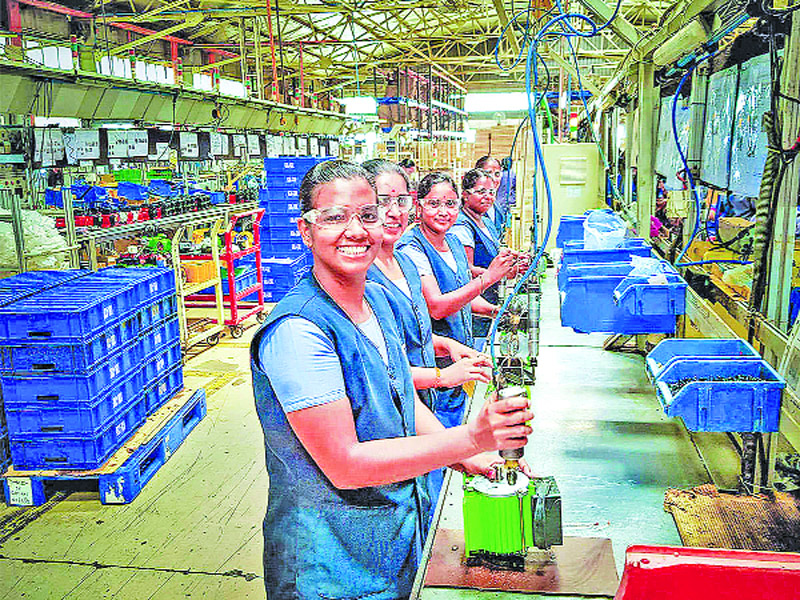The government should strengthen mechanisms to give a fair deal to MSMEs
According to a joint report by ASSOCHAM and Crisil Ratings, gross non-performing assets (NPAs) - an acronym for loans that have gone bad – of banks have declined by 0.9 to less than 5 per cent during the financial year ending March 31, 2023, and are expected to decline by another 1 per cent to a decadal low of less than 4 per cent by March 31, 2024. In respect of loans given to the corporate sector, gross NPAs are expected to be less than 2 per cent by March 31, 2024, down from a peak of 16 per cent as on March 31, 2018.
The public sector banks (PSBs) too have done remarkably well. According to the Minister of State for Finance Bhagwat K Karad, the gross NPA ratio of PSBs declined from the peak of 14.6 per cent in March 2018 to 5.53 per cent in December 2022,
The decline owes a lot to what Karad describes as a comprehensive 4R strategy implemented by Modi – government. The 4Rs are: Recognizing NPAs transparently, Resolution and recovery, Recapitalizing PSBs, and Reforms in the financial ecosystem.
Recognition is the most crucial component of the strategy. Under UPA - II (2009-2014), banks recklessly gave loans to corporate houses and businesses without assessing the viability of the projects and conducting due diligence. There was an element of ‘inevitability’ in such loans becoming NPAs. Indeed, these did become NPAs but were not recognized in the balance sheet.
In 2015, the Reserve Bank India (RBI) ordered an asset quality review (AQR) of all commercial banks to identify stressed assets and make necessary provisions in the balance sheet. As a result, their gross NPAs rose from about Rs 323,000 crore on March 31, 2015, to Rs 1036,000 crore as of March 31, 2018. As a percentage of the loans, it was 11.8 per cent (14.6 per cent for PSBs).
As for ‘Resolution and recovery’, in 2016, the government enacted the Insolvency and Bankruptcy Code (IBC). Superseding other subsisting laws gives a strong handle to banks for resolving NPAs within a strict time frame. In 2017, it amended the Banking Regulation Act (BRA) giving RBI the power to force banks to act if they don’t do it on their own. On February 12, 2018, RBI issued a circular containing the specifics of how it was to be done.
Under it, for accounts with aggregate exposure greater than Rs 2,000 crore, as soon as there was a default in the account with any lender, all lenders – singly or jointly – shall initiate steps to cure the default by preparing and implementing a resolution plan (RP). This needed to be done within 180 days from the date of default.
In case of failure to meet this deadline, the lenders were required to refer the account to the National Company Law Tribunal (NCLT) which would initiate proceedings under the IBC. The NCLT would get 180 days to complete the resolution process. A further 90 days are allowed in exceptional circumstances.
The raison d’être of imposing this timeline and involving RBI to shepherd the exercise was to sell the NPA-afflicted entity – as a going concern in an ‘objective’ and ‘transparent’ manner and maximize the realization from the sale.
Initially, things progressed well with NPAs worth around Rs 300,000 crore handled by NCLT. But, the IBC process was opposed by the defaulting borrowers/promoters. They not only contested the NCLT rulings in the High Court and the Supreme Court (SC) thus causing delays but also challenged the constitutional validity of the February 12, 2018 circular. The SC held the circular illegal and ordered the RBI to come out with fresh guidelines.
Accordingly, the RBI came up with a revised circular dated June 7, 2019. It gives banks 180 days to come up with RP (in addition to 30 days to enter into an inter-lender agreement or ILA). If the banks don’t meet this deadline, they are required to make an additional provision of 20 per cent. If they don’t finalize within 365 days or one year, an additional 15 per cent provision has to be made.
Under normal ageing provisions, if a loan is in default for one year, it has to provide for 15 per cent. In case, the delay extends to 15 months, the normal ageing provision increases to 40 per cent. Add to this 35 per cent that needs to be made as per June 7, 2019 circular, and the total provisioning requirement will be a steep 75 per cent. Having provided for such a huge amount, there won’t be any incentive left for the bank to recover the money under IBC.
By taking away powers from the RBI and giving too much leeway to the banks under the June 7, 2019 circular, the SC intervention has substantially diluted the IBC process. Against this backdrop, how come the NPAs situation has shown significant improvement?
A lot of it is due to the third R or ‘Recapitalizing PSBs’. During 2016 - 2021, the Central government gave around Rs 300,000 crore as budgetary support to shore up the capital of PSBs. In the budget for 2021-22, it committed another Rs 200,000 crore by way of ‘sovereign guarantee for the security receipts (SRs) to be issued by the asset reconstruction company (ARC) or the so-called ‘bad bank’ where the majority shareholding is with PSBs.
The Centre has goaded banks to undertake Reforms in the financial ecosystem with a focus on responsible lending, going for good quality assets, better monitoring and control over the use of loans, detecting likely stress in assets at an early stage etc. But, the banks have also got a boost from a rebound in GDP growth (during 2021-22, it was 8.9 per cent and a high of over 7 per cent during 2022-23) and associated acceleration in credit growth which enabled them to boost profits and clean up their balance sheets.
Ironically, even under this buoyant economic scenario, the position of the MSME (micro, small and medium enterprises) segment is worrying. According to ASSOCHAM/Crisil Ratings, their gross NPAs are expected to increase from an already high of about 9.3 per cent as on March 31, 2022, to 10-11 per cent by March 2024. They are handicapped due to the big brothers (read: large companies) charging high prices for inputs and intermediates, delaying payments etc impacting the former’s viability and cash flows.
For the overall NPA scenario and even large firms, the real test will come when the Indian economy comes under stress. Although, most of the institutions – Indian as well international – are projecting high growth during 2023-24 and beyond, the possibility of slippage is not ruled out especially when we consider the risk of inflation due to deterioration in the geopolitical situation, rising interest rates globally, contraction in external demand and so on.
To deal with rising NPAs in such situations, the IBC process has to be robust and efficient. But, the current scenario doesn’t instill confidence. According to the Insolvency and Bankruptcy Board of India (IBBI), of the total 5,636 cases under IBC, 3,637 have been closed. Of the closed cases, nearly half i.e. 1,703 have ended in liquidation. During January-March 2022, recovery by financial creditors was only 10.2 per cent of the admitted claims.
The government/RBI should work for the revival of the February 12, 2018, RBI circular to navigate the IBC process. It should also strengthen mechanisms to give a fair deal to MSMEs.
The writer is a policy analyst


























